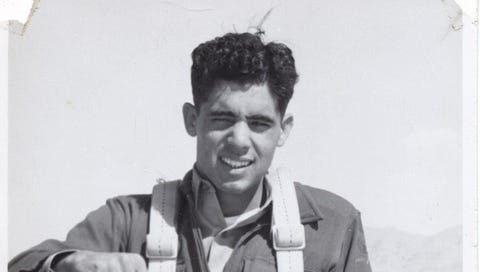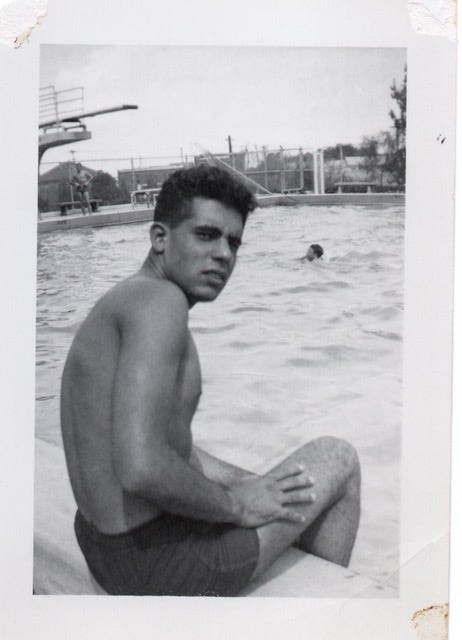Okay, the last two weeks have been rough, having to travel for work, keeping me off the keyboard. And trust me, being a two-finger typist does not allow big number stints of verbiage at each sitting. Plus, not being a political person, I’ve been taken aback at the state of our nation. I really wish people would learn the Constitution. It’s sad what we’re allowing to happen to our country. Anyway, Chico passed flight school, was awarded 2nd lieutenant and is now heading to the real world. He was going to leave his mark one way or another:
Sometimes legend defies logic. For instance, the first air-to-air combat engagement purportedly transpired November 30, 1913, during the Mexican Revolution. The rival factions of Carranza and Villa/Zapata went aloft. With revolvers, two pilots fought above Naco, situated on the Arizona/Mexico border. Neither plane went down, nor did anyone die, raising the question: Did Mexicans really invent the idea of ACM (air combat maneuvering)? And for the record, the first dog fight in WW I supposedly happened August 28, 1914.
Well, in his first assignment, Chico arrived at Turner AFB in Albany, Georgia, August 30, 1950, and reported to the 309th Fighter Escort Squadron. Attached to the 31st Fighter Wing, it also included the 307th and 308th. The day he arrived, the entire wing departed on hurricane evacuation, moving all three squadrons out of harm’s way. At squadron ops, the Admin Officer (Colin Chauret) asked if he wanted to witness something special. Walking outside, the entire wing of F-84s passed overhead, leaving for Atlanta. The two would become lifelong friends. Chico then met his squadron commander, Bill Young, who ordered him on an evacuation flight to New Orleans in a T-6, practicing instrument flying. Due to Korea and relaxed flights at Nellis, Chico did not have an instrument card but needed an instrument check to obtain one. Plus, with introductions over, the two would not work well together.
After the evacuation had lifted, Chico and Maria moved into a garage apartment, and fighter qualifying commenced. Weapon systems were simple: guns, rockets, bombs. Practice would be on the range. Newbies spent an afternoon learning the fuel and emergency systems, then were required to draw the fuel system. The next morning, an F-84 went on jack stands, wheels up, and each pilot manually lowered the landing gear from inside the cockpit, doing an emergency extension. Blindfolded, a cockpit test was next. Questions were:
“Where are the throttles?”
“Where is the airspeed indicator?”
“Where are the altimeter and circuit breakers?”
“What do you do if the engine quits?”
(Answer: go to alternate alternator, hit the start button, and bring your throttle up to idle).
If passed, they qualified. Once Chico completed ground school, it was time to get wheels up. If he landed successfully, he was rated a pilot-who-flew-fighters, flying his first jet September 12, the T-33A, with a rated pilot in the backseat.
During the process of earning wings, pilots flew propeller-driven, internal combustion engine (ICE) planes pulled by propellers, while the frontline fighters were pushed with thrust. The antithesis of the other in response to power inputs. ICE engines were almost instant power, whereas jet engines had to spool up power. The Air Force discovered the difference the hard way with the P-80, its first jet fighter. War-seasoned fighter pilots crashed a few adjusting to the nuances of thrust. In light thereof, the 309th squadron pilots had to ascertain newbies knew the intricacies. So, after the T-33, Chico followed up on the eighteenth with his other first flight, the F-84. Afterwards, daily training included formation flying, gunnery, and bombing.
Chico’s first TDY was MacDill AFB, Florida, in October. The entire squadron went to practice gunnery at Avon Park. In those days, weapons training was by those who knew. Chico went to learn the game of war for a month, or so he thought. Some days he would fly three missions while other days had him flying one, then sitting by the pool. MacDill brought things to the surface. Namely the tension with the squadron commander. Chico remembered: “When we were at Tampa, we had Don Booty, an old WW II fighter pilot. He was gruff but nice. I was a 2nd Lieutenant. He was an old, old Captain and we were flying gunnery. Tampa had a runway that was extra wide and extra-long, around 11,000 feet long and 400 feet wide. It was a bomber base. Bill Young said, ‘I don’t want anyone making formation landings.’
We came back from a gunnery mission, and Booty decided to fly GCAs (ground control approach). So, we’re flying GCAs. I’m on his wing and going around. I call him; ‘Lead, I’m getting low on fuel.’ He says; ‘Okay, stay on my wing.’ He asked how much I have, and I told him; ‘I’m getting down into the main tank.’ Well, we keep flying, and now I’m down to below emergency fuel, and we’re still flying GCAs. ‘Lead, I’m getting low on fuel.’ ‘That’s okay,’ he responds, and we make another GCA, and then he asked me again how much and went around.
Finally, I’m on fumes. He says; ‘Let’s land; stay on my wing, and let’s land.’ We landed. Well, Young was up, flying over the field watching all this. He couldn’t hear what we were saying, but he saw me land on Booty’s wing. He came down and didn’t ask for reasons, nothing. Young said, ‘You pack your bags and go home.’ Even Booty said, ‘Hey, wait a minute,’ and he said, ‘You pack your bags.’ So I did, and even Booty couldn’t dissuade him.
Booty was the flight-lead and told me to stay on his wing, so I stayed on his wing. I couldn’t just break off and land, at least I shouldn’t have. I let my leader know I was having problems, and the leader was supposed to say, ‘Okay, either go land or stay on my wing,’ and he said, ‘Stay on my wing.’ I stayed on his wing.”





If the flight was 4 planes, Lead (#1) was in charge. Three would have been Element Lead. If Lead aborted, Element took over. Two followed Lead and Four followed Element. Being that Chico was in a flight of two with Booty, Chico was the wingman and Booty was in charge. Chico had to follow his “lead.”
It was not easy flying a fighter. But who was incharge in the air?